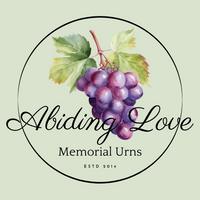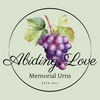
Cremation vs. Burial: Exploring Expense, Statistics, and Growing Acceptance Among Catholics and Protestants

When it comes to end-of-life arrangements, individuals often find themselves pondering the choice between cremation and burial. Both options have distinct characteristics and considerations, including expense, statistical differences, and acceptance within religious communities such as Catholics and Protestants. In this article, we will delve into these aspects, shedding light on the disparities between cremation and burial while highlighting the growing acceptance of cremation amongst Catholics and Protestants. Understanding these factors can help individuals make informed decisions that align with their beliefs and values.
Expense: Considering the financial expenses is vital when making end-of-life arrangements. In general, cremation tends to be a more cost-effective option compared to traditional burial. Cremation eliminates the need for expensive caskets, embalming, and burial plots, resulting in lower overall cost. The cost of cremation can vary based on factors such as location, funeral service options, and additional services like urns and memorial ceremonies. Conversely, burial costs typically encompass expenses for the casket, embalming, burial plot or mausoleum, headstone, and cemetery fees. These costs can significantly increase the overall price of burial.
According to the National Funeral Directors Association (NFDA), the national median cost of a burial with funeral and viewing in 2021 was $9,420. The national median cost of cremation with funeral and viewing in 2021 was $5,365 (without cremation casket and urn).
Statistical Differences: Understanding the statistical trends surrounding cremation and burial provides insights into the prevalent choices made by individuals. Over the years, cremation has gained popularity as a preferred option for end-of-life disposition, a trend that is visible among both Catholics and Protestants. Statistics show a steady increase in the cremation rate globally. In the United States, the cremation rate surpassed the burial rate in 2015, and the gap continues to widen. This shift can be attributed to various factors, including evolving cultural norms, environmental concerns, and the desire for more personalized memorial options.
Growing Acceptance Among Catholics: Within the Catholic faith, there has been a noticeable shift in the acceptance of cremation. Traditionally, the Catholic Church preferred burial as it symbolized the belief in the resurrection of the body. However, in 1963, the Vatican lifted the ban on cremation, allowing Catholics to choose this method as long as it aligns with Christian faith. In 1997, the Catholic Church further clarified its stance, emphasizing the importance of treating cremated remains with reverence and dignity, including their proper burial or placement in a sacred space such as a cemetery or columbarium. This growing acceptance has led to more Catholics considering cremation as a valid option for end-of-life arrangements.
Acceptance Among Protestants: Protestant denominations generally exhibit greater acceptance of cremation. However, acceptance can vary within different denominations and individual congregations. Many Protestant churches have no specific restrictions on cremation and leave the decision to the individual's personal beliefs and preferences. While some Protestants still lean towards burial due to the symbolic connection to resurrection and bodily continuity, the majority embrace the flexibility offered by cremation.

In Conclusion: Choosing between cremation and burial involves considering factors such as expense, statistical differences, and acceptance within religious communities. Catholics and Protestants have witnessed a growing acceptance of cremation in recent years. While burial has long been the traditional choice, the updated guidelines of the Catholic Church and the open-mindedness of many Protestant denominations have allowed for greater flexibility in end-of-life decisions. It is important for individuals to engage in open discussions with their religious leaders, family members, and funeral professionals to ensure that their chosen option aligns with their faith, personal preferences, and financial circumstances.


